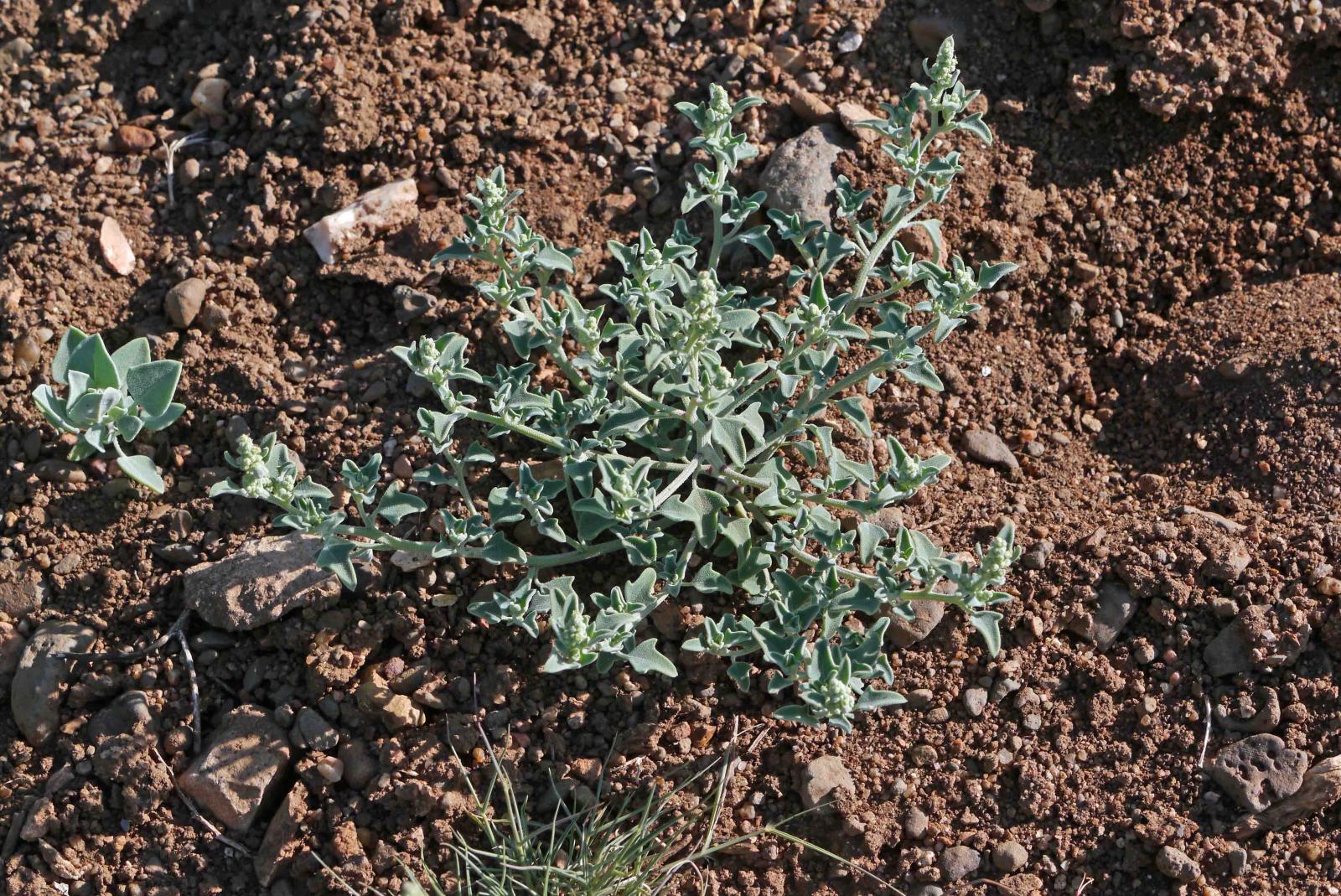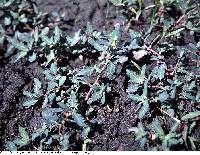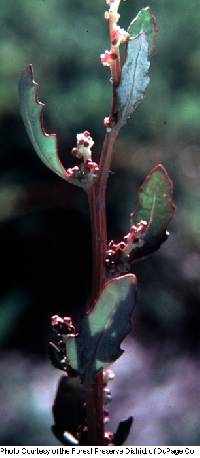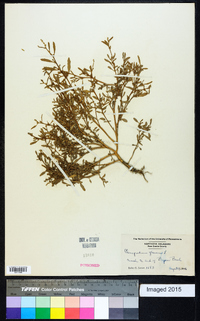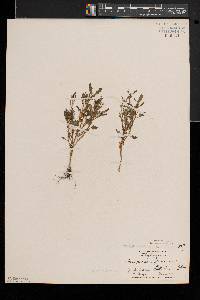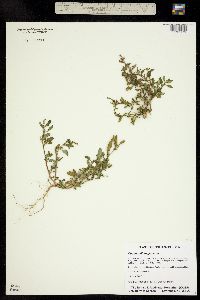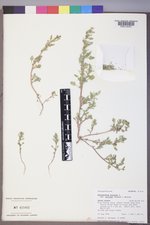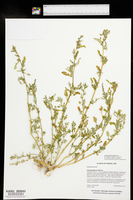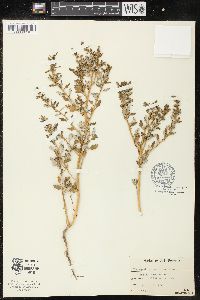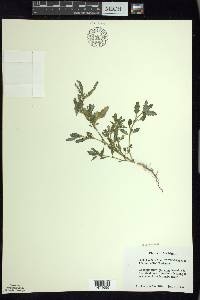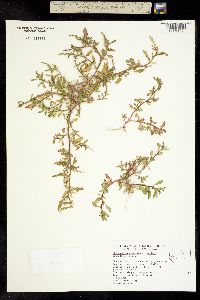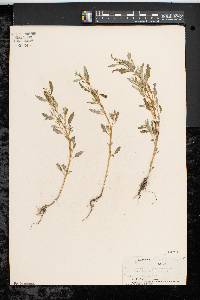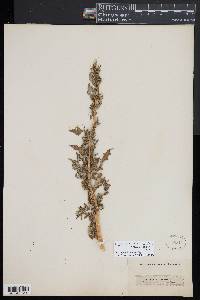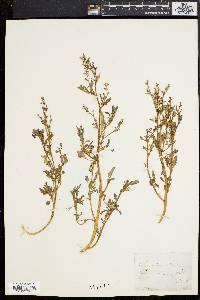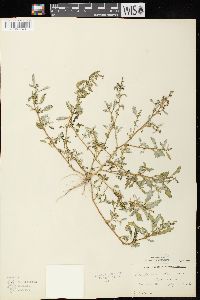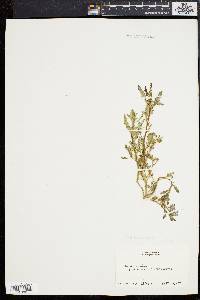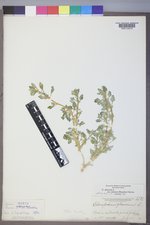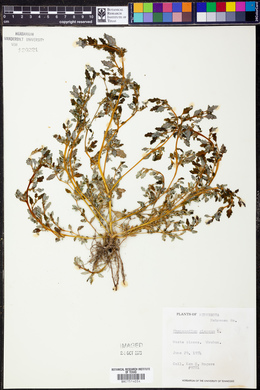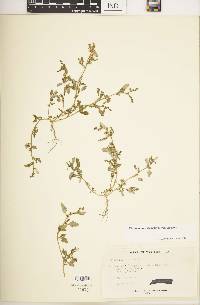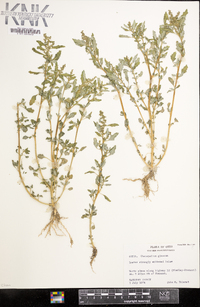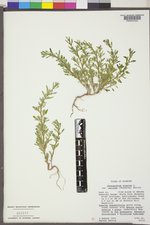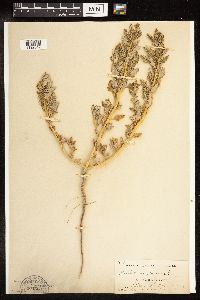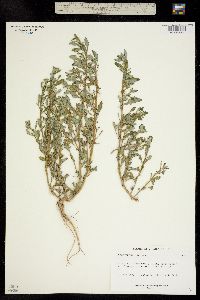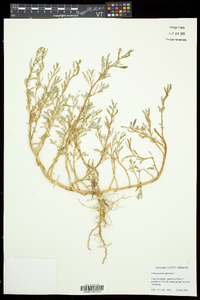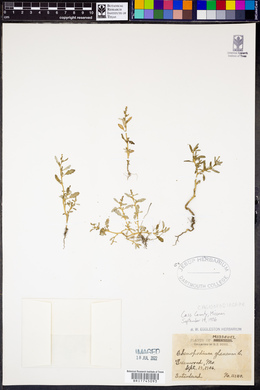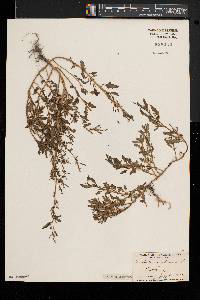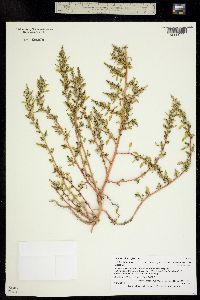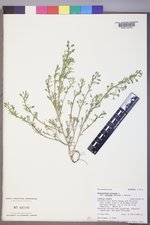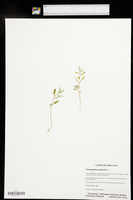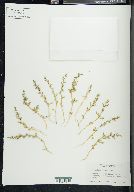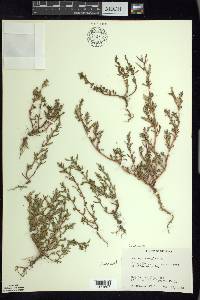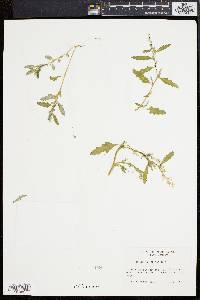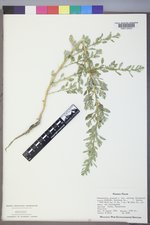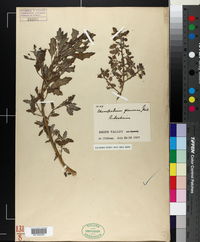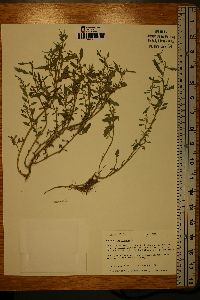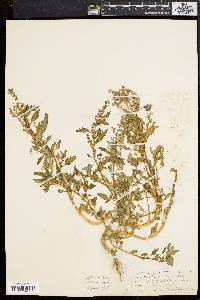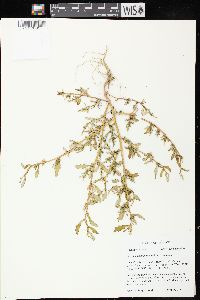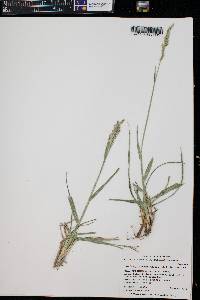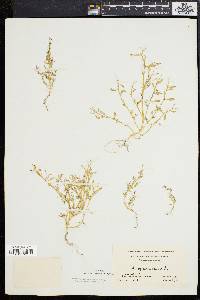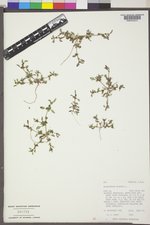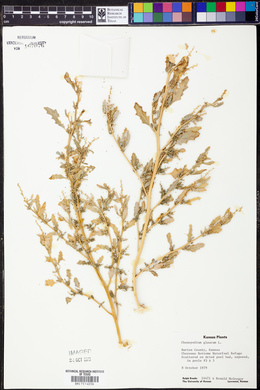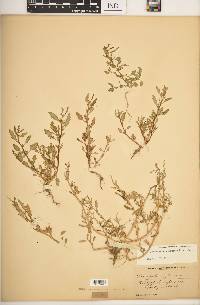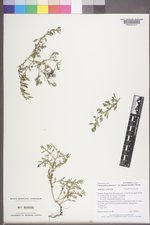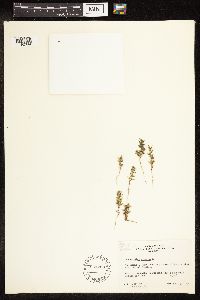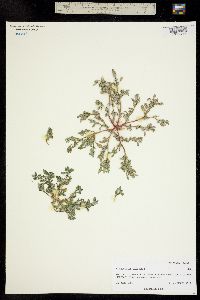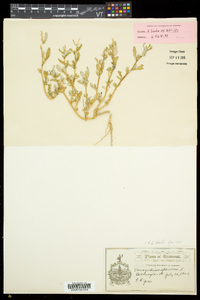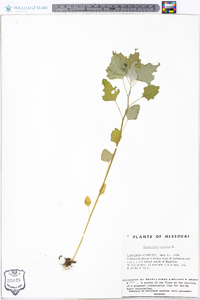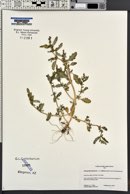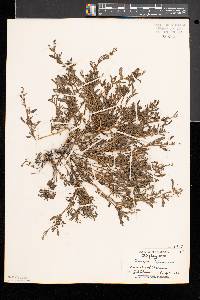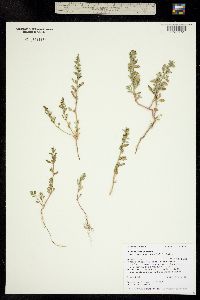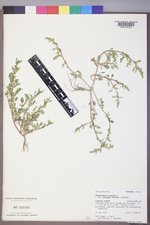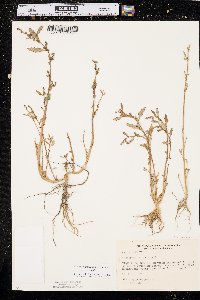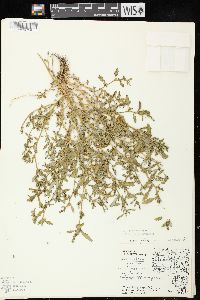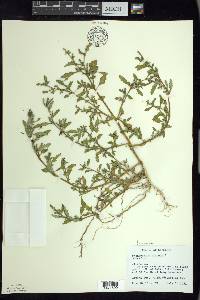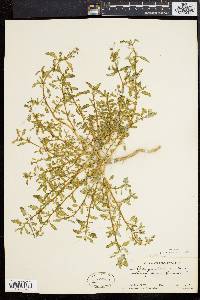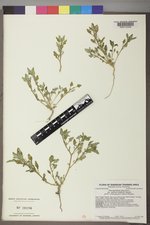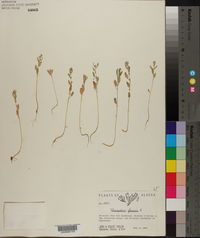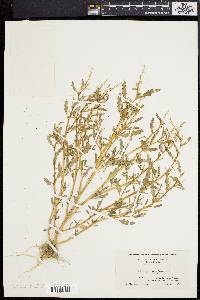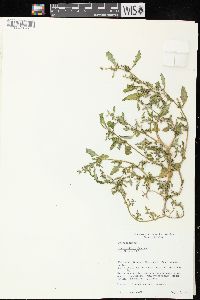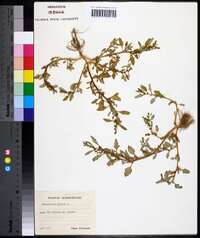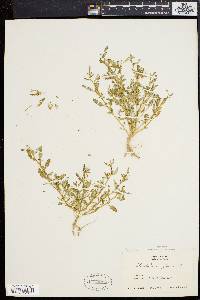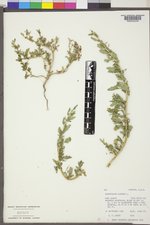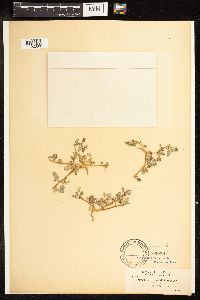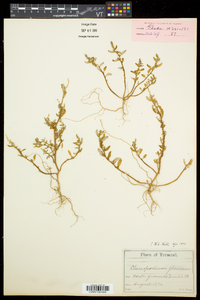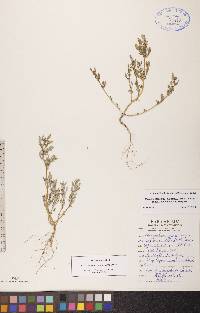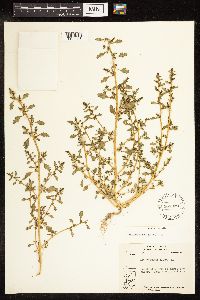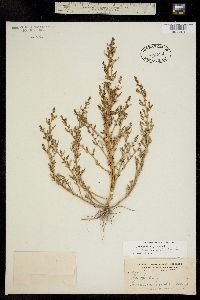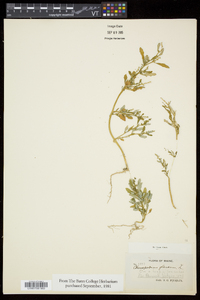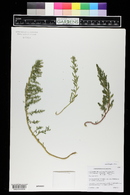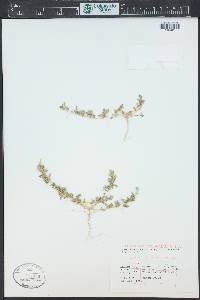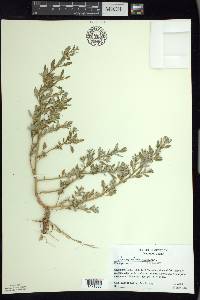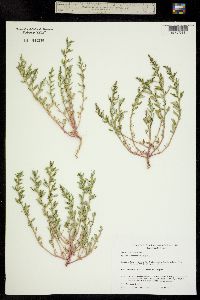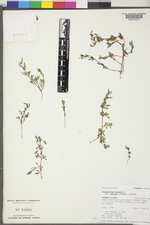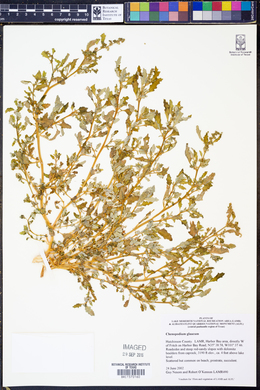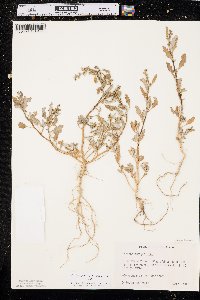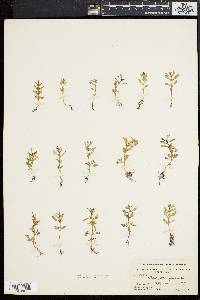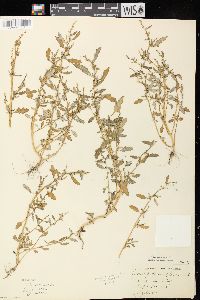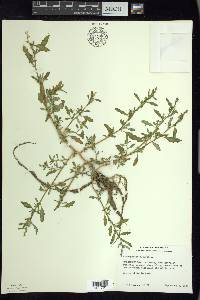Oxybasis glauca
|
|
|
|
Family: Amaranthaceae
Oak-Leaf Eurasian-Goosefoot, more...Oakleaf Goosefoot, oak-leaf goosefoot
[Chenopodium glaucum L., moreChenopodium glaucum glaucum , Chenopodium glaucum subsp. euglaucum Aellen, Chenopodium glaucum subsp. glaucum , Chenopodium glaucum var. pseudorubrum A. F. Schwarz, Chenopodium wolffii Simonk.] |
Stems erect to prostrate, branched from base, 0.5-2.5(-4) dm, farinose. Leaves nonaromatic; petiole to 1 cm; blade lanceolate to oblong or ovate, 0.5-4 × 0.3-1.5 cm, base cuneate, margins undulate-dentate, teeth obtuse or acute, apex obtuse or acute, densely farinose, glaucous abaxially. Inflorescences glomerules in terminal or lateral spikes, 5-10 cm; glomerules subglobose, 1.8-2.5 mm diam.; bracts leaflike in inflorescence, elliptic, 0.2-1 × 0.1-0.5 cm, or absent at least in terminal 1/2 of inflorescence. Flowers: perianth segments 3-4; lobes obovate to oblong, 0.5-0.7 × 0.4-0.5 mm, apex obtuse, rounded, not keeled, covering fruit at maturity; stamen 1; stigmas 2. Utricles ovoid; pericarp nonadherent, smooth. Seeds mostly horizontal, some vertical, margins rounded; vertical seeds ovoid to round, 0.6-1.1 mm diam.; horizontal seeds round, 0.6-1.1 mm diam.; seed coat reddish brown, rugose-punctate. 2n = 18. Several entities (segregate species, subspecies, varieties, and forms) have been described within the Chenopodium glaucum group. Most of the taxa represent morphological traits of individual or ecological variability and have little or no taxonomic importance. However, several entities are well delimited geographically. The native North American taxon is recognized here as a separate variety.
Annual herb 5 - 40 cm tall Stem: upright to prostrate, branched at base, white-mealy. Leaves: alternate, stalked (stalk to 1 cm), 0.5 - 4 cm long, 0.5 - 1.5 cm wide, lance-shaped to egg-shaped with a tapering base and blunt or pointed tip, sometimes wavy or wavy-toothed along the margins, densely white-mealy, with a waxy coating (glaucous) on the lower surface . Inflorescence: a 2 - 2.5 mm wide, nearly round cluster of flowers (glomerule), which together form 5 - 10 cm long spikes. Flowers: greenish, small, with three or four sepals and no petals. Sepal lobes about 0.5 mm long and wide, reverse egg-shaped to oblong with a blunt apex, not keeled. Stamen one. Stigmas two. Fruit: one-seeded (utricle), enclosed in the persistent, incurved sepals, egg-shaped, thin-walled. Wall (pericarp) not adherent to the seed. Seed mostly horizontal, sometimes vertical, dark reddish brown, shiny, 0.6 - 1 mm wide, egg-shaped to round, round-margined, wrinkled-dotted. Similar species: No information at this time. Flowering: late June to late September Habitat and ecology: Introduced from the Old World. Found in waste ground, barnyards, and in the cinders of railroad ballast. Occurence in the Chicago region: non-native Etymology: Chenopodium comes from the Greek words chen, meaning goose, and podion, meaning "little foot," referring to the leaf shape of some species. Glaucum means "having a thin and waxy or powdery coating." Author: The Morton Arboretum FNA 2004, Kearney and Peebles 1969, McDougal 1973 Duration: Annual Nativity: Native Lifeform: Forb/Herb General: Herbaceous annuals, 5-40 cm tall; stems erect to prostrate, branching from base; herbage subglabrous to farinose, nonaromatic. Leaves: Alternate and petiolate, the petioles to 1 cm long; blades lanceolate to oblong or ovate, 5-40 mm long and 3-15 mm wide, with undulate-dentate margins, an obtuse or acute apex, and a cuneate base, pale green and slightly farinose above, densely farinose and nearly white below. Flowers: Small and bright green, in clusters (glomerules) arranged in terminal or lateral spikes, these sparsely pilose to villous and subtended by elliptic, leaflike bracts. Bracts usually with undulate-dentate margins, 2-10 mm long and 1-5 mm wide, sometimes absent in the terminal half of the inflorescence. Glomerules subglobose, 2 mm in diameter. Flowers with 3-4 perianth segments, these rounded, not fleshy, covering fruit at maturity. Fruits: Utricles ovoid, with a smooth, nonadherent pericarp. Seeds mostly horizontal, some vertical, with rounded margins; vertical seeds ovoid to round, 0.6-1.1 mm in diameter; horizontal seeds round, 0.6-1.1 mm in diameter; seed coats reddish brown and rugose-p Ecology: Found on saline soils from 5,000-6,000 ft (1524-1829 m); flowering July-September. Distribution: North Dakota to Alaska, southward to Missouri, New Mexico, Arizona, and Oregon. Notes: Chenopodium is a genus of usually weedy annual herbs with simple, alternate leaves, herbage that is commonly farinose (with mealy, or floury hairs) to some degree, and clusters of small green flowers lacking petals, which mature into fruits composed of a single seed wrapped in the persistent calyx. In C. glaucum, the green glomerules of the inflorescences stand out against the almost white leafy bracts, with the stems green or sometimes tinged red. Look to the densely white-farinose undersides of the leaves and the sinuate-dentate margins, the leafy bracts of the inflorescences, and vertical and horizontal seed distribution within the fruits to help identify this species. If the perianth is fleshy and bright red, look to C. capitatum, and if the leaves are glabrous or glabrescent on both sides, check C. rubrum if you are in Arizona. Ethnobotany: Specific uses for this species are unknown, but other species in the genus have uses; the seeds used as a grain and the young leaves used for greens. Synonyms: Numerous, see Tropicos Editor: LCrumbacher2012, AHazelton 2015 Etymology: Chenopodium comes from the Greek chen, "goose," and pous, "foot," or podion, "a little foot," referring to the shape of the leaves in some species, while glaucum means glaucous, from the Greek meaning "bluish-gray," referring primarily to the leaves, and specifically to "bloom," the fine, whitish powder that coats the leaves of certain plants. Annual, usually branched from the base, prostrate to erect, 1-4 dm; lvs lanceolate to oblong or ovate, 1-4 cm, cuneate at base, entire or merely undulate, or with 2-4 low teeth per side, densely white-mealy beneath, especially when young; fls in small glomerules aggregated into usually interrupted spiciform clusters equaling or shorter than the lvs, or also in a short terminal panicle; sep mostly 3(4); seeds dark brown, shining, lenticular, 0.6-1 mm wide, loose in the pericarp, those of the lateral fls of the cymules erect, that of the terminal fl in the cymule horizontal; 2n=28. Native of Europe, occasionally found as a weed in our range, especially northward. (C. salinum) Gleason, Henry A. & Cronquist, Arthur J. 1991. Manual of vascular plants of northeastern United States and adjacent Canada. lxxv + 910 pp. ©The New York Botanical Garden. All rights reserved. Used by permission. From Flora of Indiana (1940) by Charles C. Deam ...... Indiana Coefficient of Conservatism: C = null, non-native Wetland Indicator Status: FACW Diagnostic Traits: leaves oblong, mostly <2 cm long and >1.5 times longer than wide, sinuate, farinose with inflated white-hairs beneath; flowers glabrous; sepals 3-4, herbaceous; some fruits vertical; seeds less than 1 mm wide, margins acute. |

